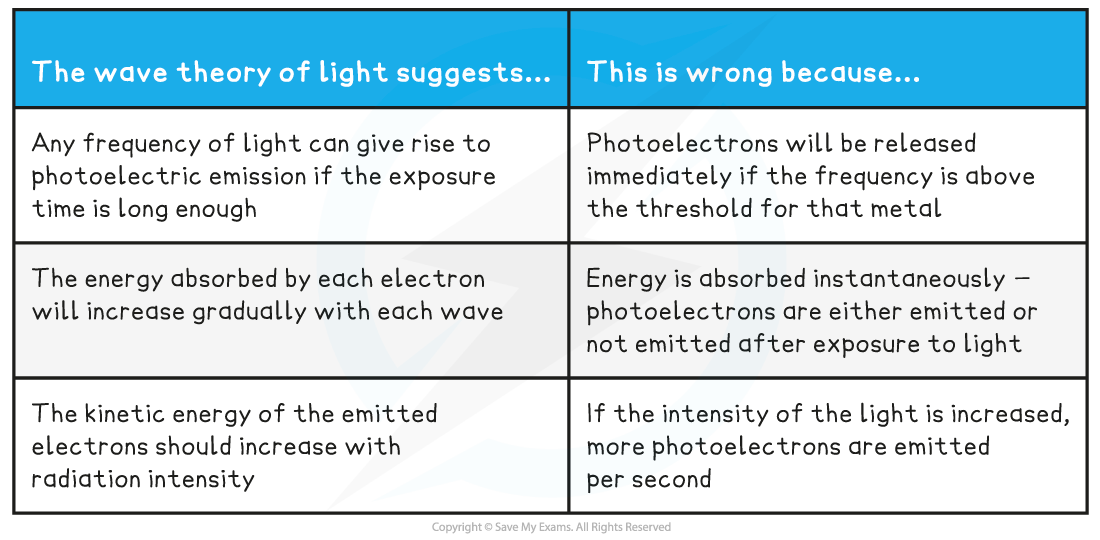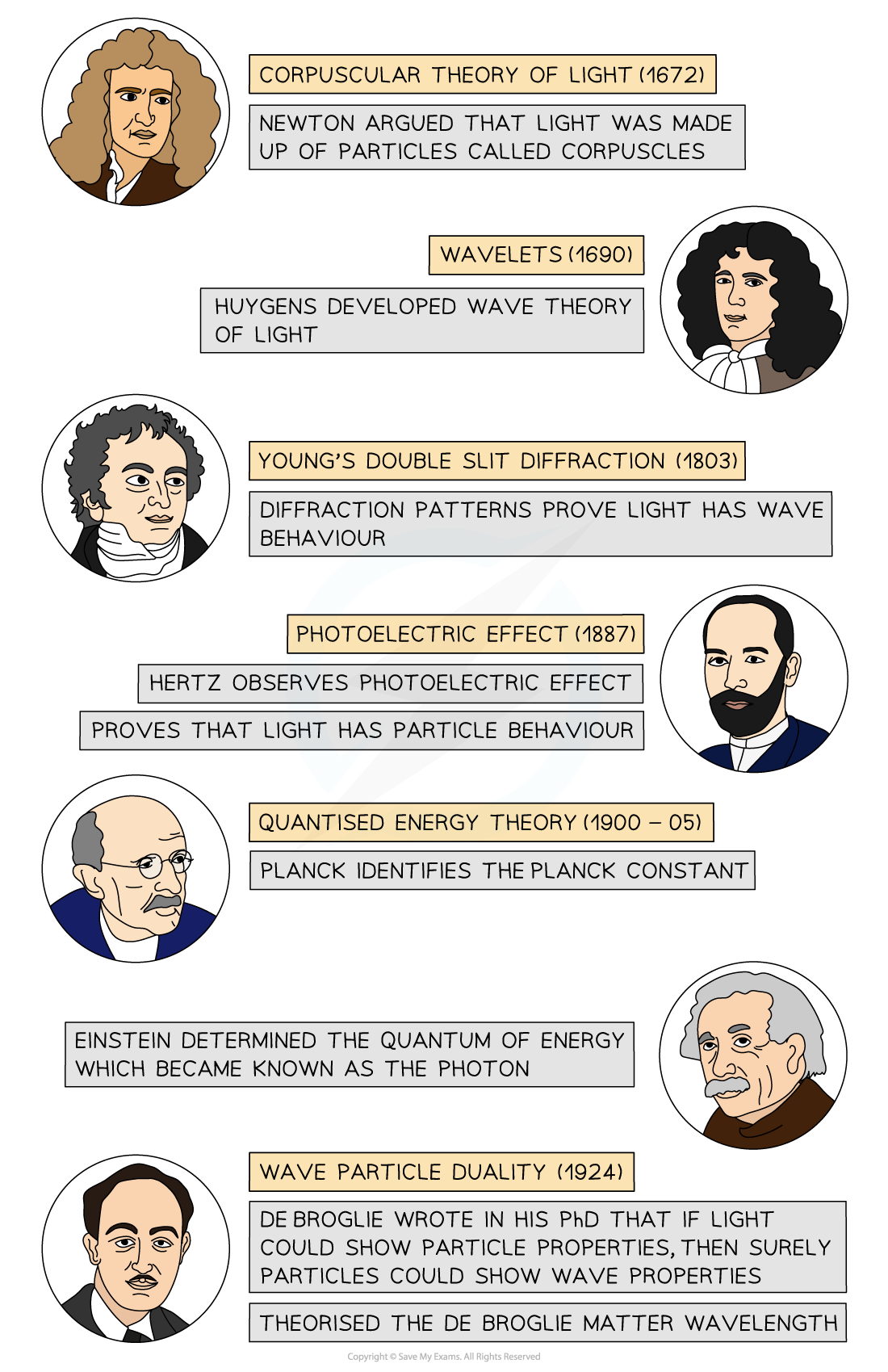- 翰林提供学术活动、国际课程、科研项目一站式留学背景提升服务!
- 400 888 0080
Edexcel A Level Physics:复习笔记5.32 Wave-Particle Duality
Wave-Particle Duality
- Light can behave as a particle (i.e. photons) and a wave
- This phenomenon is called the wave-particle nature of light or wave-particle duality
- Light interacts with matter, such as electrons, as a particle
- The evidence for this is provided by the photoelectric effect
- Light propagates through space as a wave
- The evidence for this comes from the diffraction and interference of light in Young’s Double Slit experiment
Light as a Particle
- Einstein proposed that light can be described as a quanta of energy that behave as particles, called photons
- The photon model of light explains that:
- Electromagnetic waves carry energy in discrete packets called photons
- The energy of the photons are quantised according to the equation E = hf
- In the photoelectric effect, each electron can absorb only a single photon - this means only the frequencies of light above the threshold frequency will emit a photoelectron
- The wave theory of light does not support the idea of a threshold frequency
- The wave theory suggests any frequency of light can give rise to photoelectric emission if the exposure time is long enough
- This is because the wave theory suggests the energy absorbed by each electron will increase gradually with each wave
- Furthermore, the kinetic energy of the emitted electrons should increase with radiation intensity
- However, in the photoelectric effect, this is not what is observed
- If the frequency of the incident light is above the threshold and the intensity of the light is increased, more photoelectrons are emitted per second
- Although the wave theory provides good explanations for phenomena such as interference and diffraction, it fails to explain the photoelectric effect
Compare wave theory and particulate nature of light

Development of the Theory of Wave-Particle Duality
- Ideas about the nature of light were contested by modern science for around 300 years
- The evidence to prove both theories was available
- Some prominent scientists argued light was a wave
- Others contested that light was a particle
- It was not until the early 20th century that scientists settled on a theory of duality

转载自savemyexams

最新发布
© 2026. All Rights Reserved. 沪ICP备2023009024号-1









